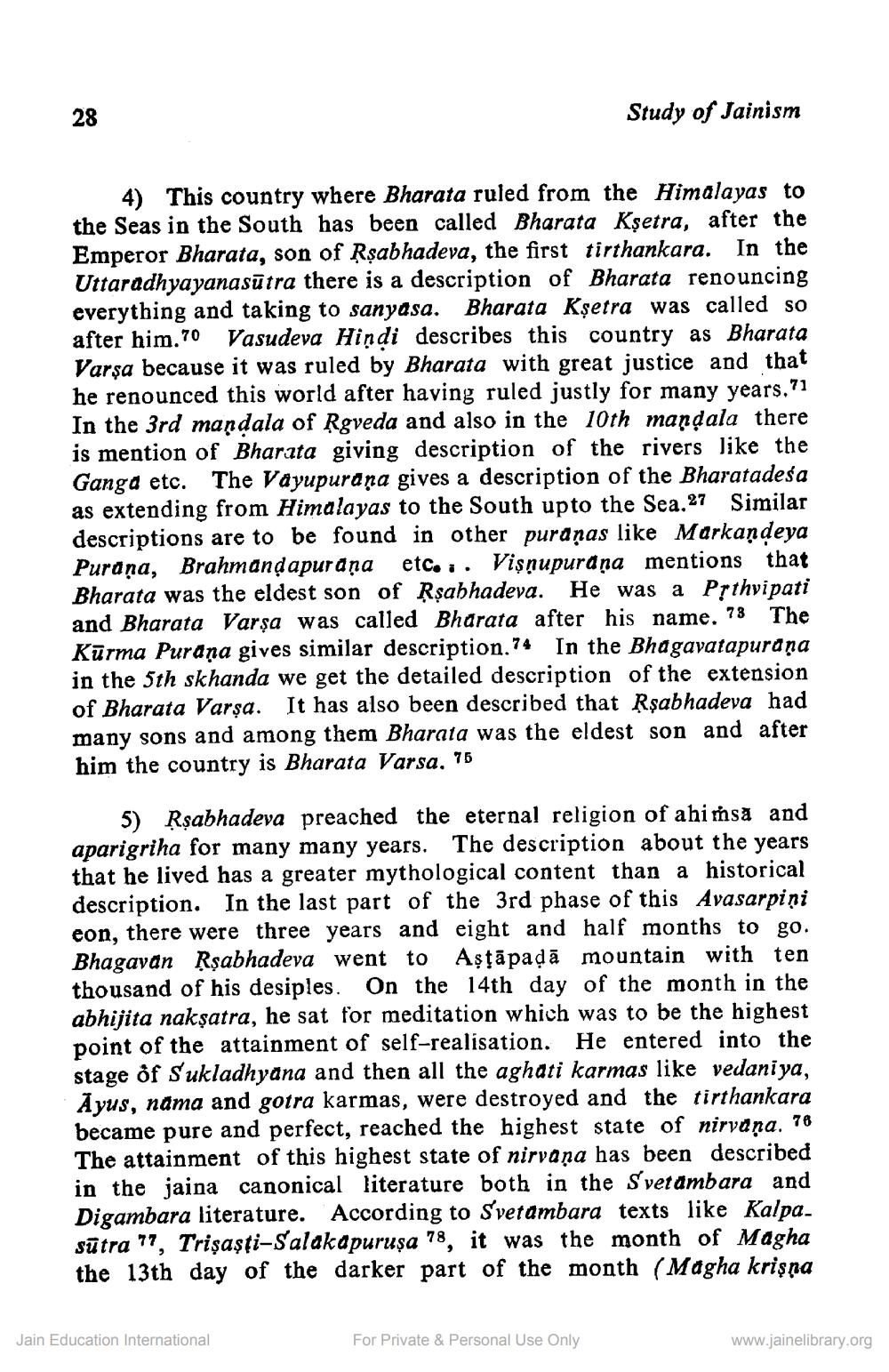________________
Study of Jainism
4) This country where Bharata ruled from the Himalayas to the Seas in the South has been called Bharata Kşetra, after the Emperor Bharata, son of Rşabhadeva, the first tirthankara. In the Uttaradhyayanasūtra there is a description of Bharata renouncing everything and taking to sanyasa. Bharata Kșetra was called so after him.70 Vasudeva Hindi describes this country as Bharata Varşa because it was ruled by Bharata with great justice and that he renounced this world after having ruled justly for many years.71 In the 3rd mandala of Rgveda and also in the 10th mandala there is mention of Bharata giving description of the rivers like the Ganga etc. The Väyupuraņa gives a description of the Bharatadesa as extending from Himalayas to the South upto the Sea.27 Similar descriptions are to be found in other puranas like Markandeya Purana, Brahmandapurana etc. i. Vişnupuraņa mentions that Bharata was the eldest son of Rşabhadeva. He was a Pșthvipati and Bharata Varșa was called Bharata after his name. 73 The Kūrma Purana gives similar description.74 In the Bhagavatapuraņa in the 5th skhanda we get the detailed description of the extension of Bharata Varșa. It has also been described that Rşabhadeva had many sons and among them Bharata was the eldest son and after him the country is Bharata Varsa. 76
5) Rşabhadeva preached the eternal religion of ahimsa and aparigriha for many many years. The description about the years that he lived has a greater mythological content than a historical description. In the last part of the 3rd phase of this Avasarpini eon, there were three years and eight and half months to go. Bhagavan Rşabhadeva went to Aştāpaļā mountain with ten thousand of his desiples. On the 14th day of the month in the abhijita nakşatra, he sat for meditation which was to be the highest point of the attainment of self-realisation. He entered into the stage of Sukladhyana and then all the aghati karmas like vedaniya, Ayus, nama and gotra karmas, were destroyed and the tirthankara became pure and perfect, reached the highest state of nirvana. 78 The attainment of this highest state of nirvana has been described in the jaina canonical literature both in the Svetambara and Digambara literature. According to Svetambara texts like Kalpasūtra 77, Trişaşti-S'alakapuruşa 78, it was the month of Magha the 13th day of the darker part of the month (Magha krişna
Jain Education International
For Private & Personal Use Only
www.jainelibrary.org




